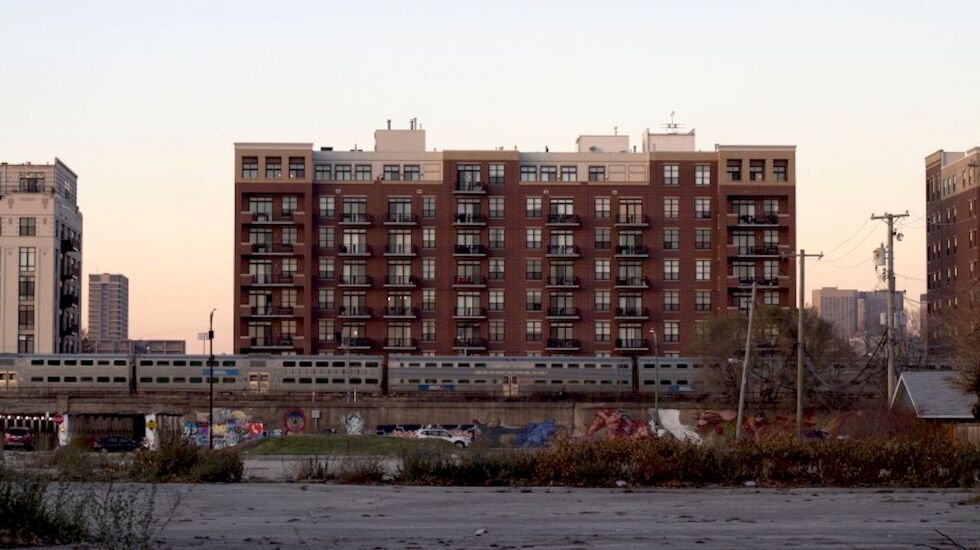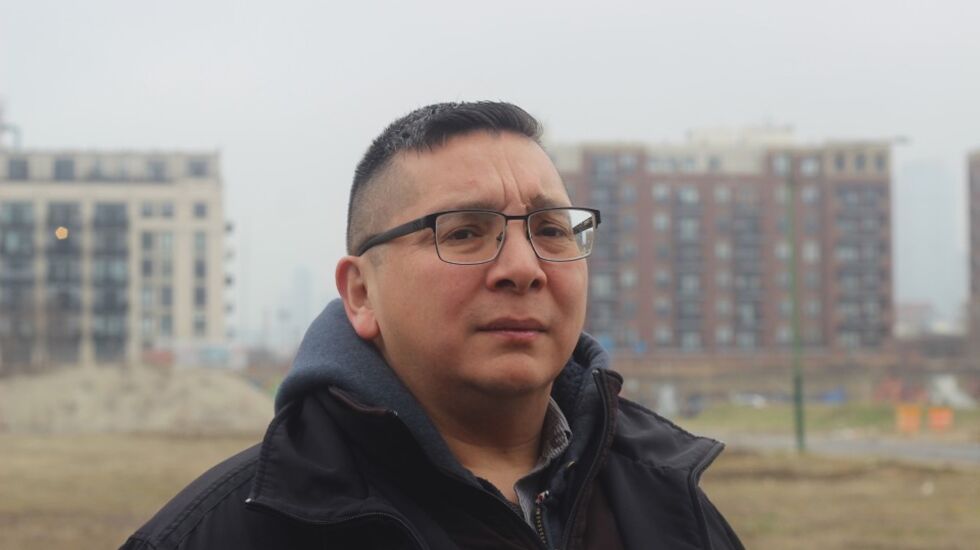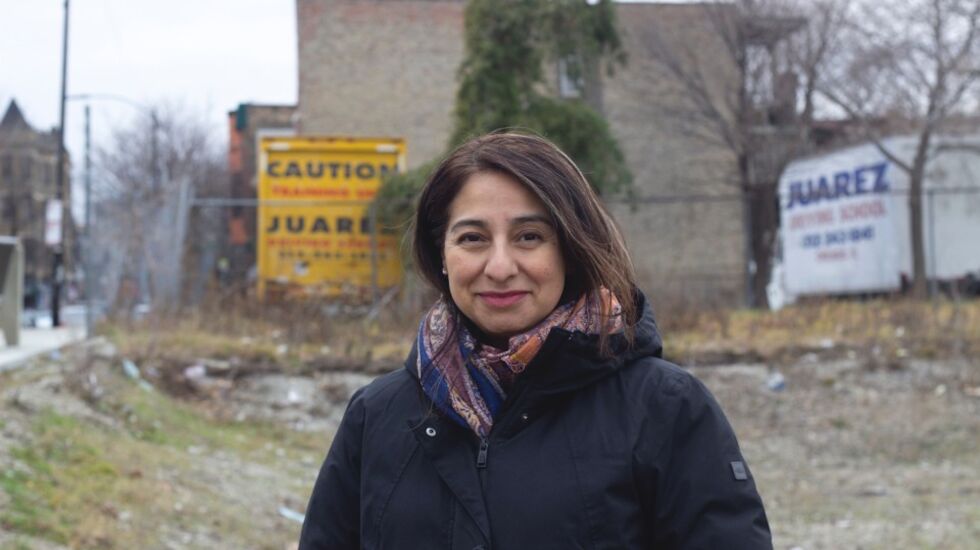
Felipe Luna walks down 18th Street, sharing stories from his childhood — like how he used to flatten pennies on the train tracks that ran through Chicago’s Pilsen neighborhood.
The street is dotted with bars, restaurants and shops — some old, some new. But as one walks east, the bustle ends at a large, vacant lot at 18th and Peoria, framed by train tracks, the high-end buildings of University Village rising in the background.
Luna grew up across the street, in the house where his father still lives. He gestures across the empty parcel. To him, University Village looks out of place, from “a different world” than the lot, Luna says. Done right, whatever ends up on the vacant land could bridge that visual disconnect.
As the property moved among developers over the past 20 years, residents pushed for affordable housing at every turn. The city purchased the land this year, promising to build that long-awaited affordable housing.
Since September, the city departments of planning and housing — along with their consultants and the office of Ald. Byron Sigcho-Lopez (25th) — have held public meetings.
At this year’s final public meeting, last week at Pilsen’s Jungman Elementary, the city presented preliminary sketch plans for the development, wrapping up this round of community engagement.
Titled “Trailhead,” “Linear” and “Pocket,” the sketches vary in where they concentrate open space, the types of buildings (high rises, mid rises and townhomes) and how those are arranged.
The plans also vary in number of residential units, ranging from 286 to 355. The city has not said whether all units will be rentals or if some will be available to buy.

City officials said the sketches are not final plans, but rather will guide developer proposals next year. Officials say a draft plan will be released for public comment in January, and the final plan released in April.
Nicole Reyes, an organizer with the Pilsen Alliance, sits on the city stakeholder group advising about the lot. She wants the site to have 100% affordable housing. As of now, the city is aiming for majority-affordable but says the mix will depend on resident feedback.
According to the DePaul University Institute for Housing Studies, the share of lower-cost rentals in the neighborhood has declined by about 37 percentage points between 2010 and 2020. In that same time period, the share of households making over $100,000 increased by about 17 percentage points, while the share of households making less than $50,000 declined. Within that subset, the biggest losses were in households making less than $25,000.
As one walks through the neighborhood, the contrast is visible. New townhomes with starkly modern architecture stand next to older, brick and wooden buildings.
The Resurrection Project has been providing affordable housing in Pilsen for about 30 years and hopes to submit a bid to develop the lot. Vicky Arroyo said the nonprofit hears from residents who are experiencing gentrification first hand.
“We hear about the individual that says I had to move out of Pilsen because I couldn’t live there,” said Arroyo, Resurrection’s president and chief operating officer. “We have heard residents tell us that the community is changing because they don’t see children in the parks anymore.”
Pilsen resident Martha Banda lived in a home provided through The Resurrection Project from 1995-2007. Now she and her mother own several apartments around the neighborhood. Banda said they keep their rents low, to create some affordable housing in the otherwise skyrocketing neighborhood.

When the lot is developed at 18th and Peoria, she wants to see green space in addition to affordable housing.
She was frustrated to miss a public meeting on Oct. 29 because she was involved in a huge community event, Pilsen’s Day of the Dead run, held the same day.
Some stakeholders even sent the city a letter asking that the meeting be held the following week. The city agreed to extend the meeting, but wouldn’t move it.
Natasha Hamilton works on community engagement for the city housing department and acknowledged the frustration.
“We are again working very closely with the alderman’s office in the 25th Ward, as well as with the consultants regarding outreach. And so we really do want to acknowledge that this engagement process has had its challenges, but it also too it’s a learning process for us all,” Hamilton said.
As for Felipe Luna, 18th and Peoria has loomed large in his life for years — and his motivation for staying involved is clear.
“This is Pilsen, this is always worth fighting for. I think that it’s important that we set the stage. This neighborhood has been oneq that is boots-on-the-ground working class people, professional people,” Luna said. “Even through our disagreements, we find a way to work together and get things done.”
Indira Khera is a metro reporter at WBEZ.








